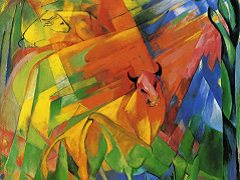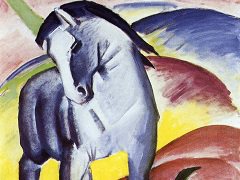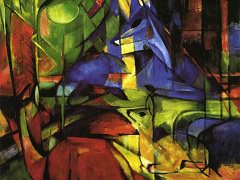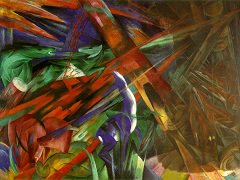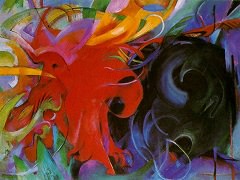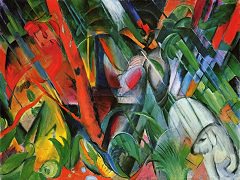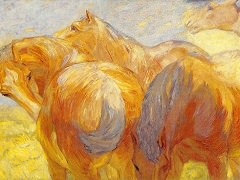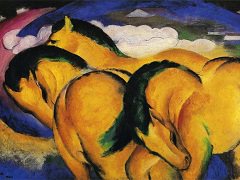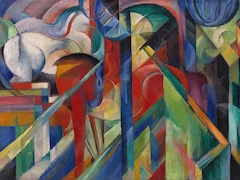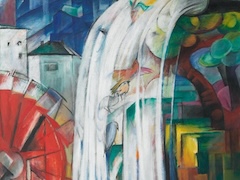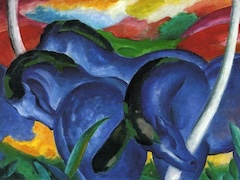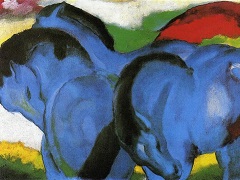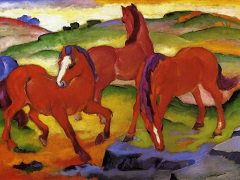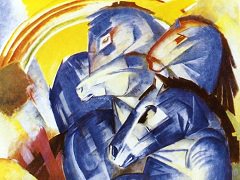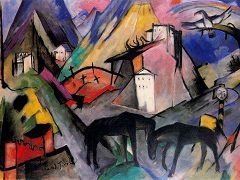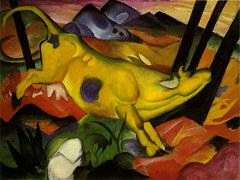Monkey Frieze, 1911 by Franz Marc
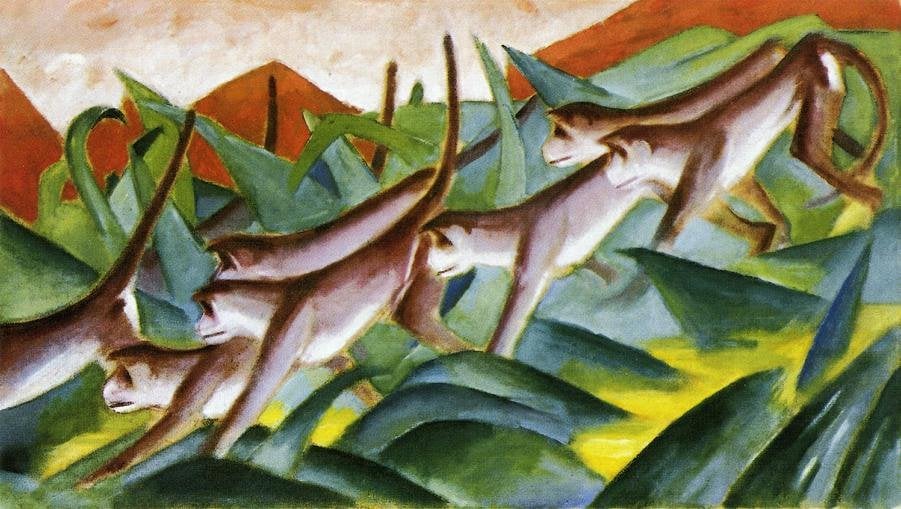
Franz Marc believed that animals possessed a certain godliness that men had long since lost. "People with their lack of piety, especially men, never touched my true feelings," he wrote in 1915. "But animals with their virginal sense of life awakened all that was good in me" (Herschel B. Chipp, Theories of Modern Art: A Source Book by Artists and Critics [Berkeley: University of California Press, 1968], p. 182). By 1907 he had devoted himself almost exclusively to the representation of animals in nature. Although Marc had a deep knowledge of anatomy, his goal was not zoological accuracy, but rather capturing the essence of each animal in his paintings.
To complement this imagery, through which he expressed his spiritual ideals, Marc developed a theory of color symbolism. In a letter to fellow artist August Macke (1887 - 1914) dating from 1910, Marc assigned emotional values to colors. "Blue is the male principle, astringent and spiritual. Yellow is the female principle, gentle, gay and spiritual. Red is matter, brutal and heavy and always the color to be opposed and overcome by the other two."

